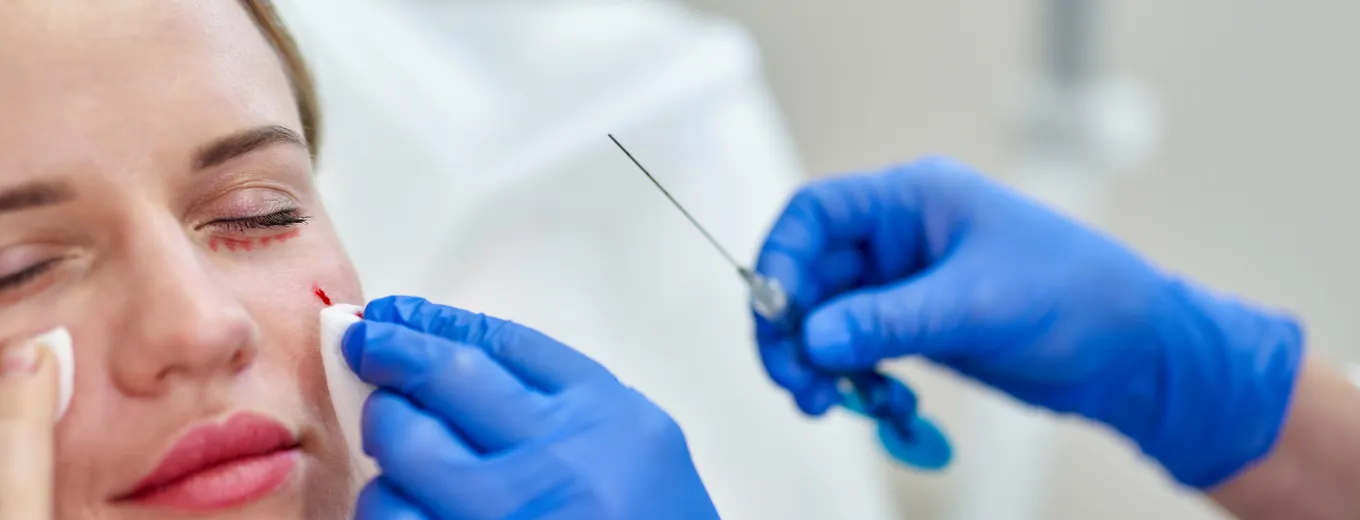Xanthelasma is a common skin condition characterized by yellowish patches or bumps that develop on the eyelids. These growths are a type of xanthoma, which are deposits of cholesterol and fat that accumulate beneath the skin. If you’re dealing with xanthelasma and considering removal, it’s important to understand the different types of xanthomas, the causes of xanthelasma, the relevant blood tests, the removal procedures (such as RF ablation, CO2 laser, and surgical excision), post-treatment aftercare, prevention strategies, and why Ray & Rio’s is the best place for xanthelasma removal in Chennai.
Types of Xanthomas
Xanthomas can present in different forms, each with unique characteristics. Recognizing these types is essential for proper diagnosis and treatment.
- Xanthelasma Palpebrarum: Yellowish plaques that develop on the eyelids, often associated with lipid disorders. These are the most common type and may be a cosmetic concern.
- Tuberous Xanthomas: Firm, painless nodules that usually appear on pressure-prone areas like elbows and knees.
- Tendinous Xanthomas: Develop over tendons, particularly the Achilles tendon and hands, often linked to familial hypercholesterolemia.
- Eruptive Xanthomas: Small, red-yellow bumps that appear suddenly, commonly on the buttocks or thighs, and are associated with high triglyceride levels.
Each type of xanthoma may require a different treatment strategy based on its underlying cause and location.
Causes of Xanthelasma
Xanthelasma is caused by the accumulation of lipids, particularly cholesterol, in the skin. While the exact mechanism is not fully understood, several factors and conditions are associated with its development:
- Hyperlipidemia: High levels of cholesterol and other lipids in the blood.
- Diabetes: Increased cholesterol levels can contribute to lipid deposits in the skin.
- Liver Disease: Impaired liver function may result in abnormal lipid metabolism.
- Genetic Predisposition: Family history can increase susceptibility.
- Idiopathic Cases: Xanthelasma can develop in individuals without underlying health conditions.
Understanding these causes is essential for addressing the underlying issues and preventing recurrence. Regular health check-ups can help identify and manage contributing factors effectively.
Blood Tests for Xanthelasma
To investigate the underlying causes of xanthelasma, blood tests are often recommended to assess lipid levels and identify any associated health conditions. A lipid panel is a primary test, measuring:
- Total Cholesterol: Indicates overall cholesterol levels.
- LDL Cholesterol (Bad Cholesterol): High levels can lead to plaque buildup in arteries.
- HDL Cholesterol (Good Cholesterol): Low levels may increase cardiovascular risk.
- Triglycerides: Elevated levels are linked to metabolic disorders.
Abnormalities in these lipid levels may contribute to xanthelasma formation. These tests help healthcare providers identify potential risk factors, such as hyperlipidemia or cardiovascular disease, enabling early interventions like dietary changes, medications, or lifestyle adjustments to address the root cause effectively.
Methods of Xanthelasma Removal
Xanthelasma can be effectively removed through various procedures, depending on the size, location, and individual factors. Three common removal methods include:
- Radiofrequency (RF) Ablation: This non-surgical technique utilizes high-frequency electrical energy to heat and vaporize the xanthelasma without damaging the surrounding tissues. RF ablation is relatively quick, minimally invasive, and requires little downtime.
- CO2 Laser Treatment: In this procedure, a focused beam of CO2 laser light is used to vaporize and remove the xanthelasma. The laser allows for precise targeting and minimal scarring, making it a popular choice for xanthelasma removal.
- Surgical Excision: Surgical excision involves the removal of xanthelasma through a small incision. This method is typically used for larger or more extensive growths. Sutures are used to close the incision, and proper wound care is essential for optimal healing.
Aftercare after Xanthelasma Removal
After xanthelasma removal, proper aftercare is essential to ensure effective healing and reduce the risk of complications. Follow your healthcare provider’s instructions carefully to achieve the best results. Key aftercare steps include:
- Wound Care: Keep the treated area clean and dry to prevent infection.
- Medication Use: Apply prescribed ointments or take medications as directed.
- Avoid Sun Exposure: Protect the treated area from direct sunlight using sunscreen or protective coverings.
- Activity Restrictions: Avoid strenuous activities or rubbing the area during the recovery phase.
- Regular Follow-Ups: Attend scheduled appointments to monitor healing and address any concerns.
Adhering to these guidelines will help ensure smooth recovery and optimal outcomes after your xanthelasma removal procedure.
How to Prevent Xanthelasma?
Preventing xanthelasma primarily involves addressing the root causes, such as high cholesterol, diabetes, or liver disease. Begin by adopting a heart-healthy diet rich in fruits, vegetables, whole grains, lean proteins, and healthy fats while reducing saturated fats and sugars. Regular physical activity, such as brisk walking or yoga, helps regulate cholesterol levels and improve overall health. Avoid smoking, as it contributes to high cholesterol and vascular issues. Maintaining a healthy weight is equally vital, as obesity is a risk factor. Regular health check-ups to monitor cholesterol and blood sugar levels can help detect and manage potential problems early. By combining these lifestyle changes with medical advice, you can significantly reduce the risk of xanthelasma recurrence and promote overall wellness.
Why Ray & Rio’s is the Best Clinic for Xanthelasma Removal in Chennai
Ray & Rio’s is widely recognized as a leading clinic for xanthelasma removal in Chennai. Our experienced Dermatologist specializes in the treatment and removal of xanthelasma using advanced techniques. With a commitment to patient satisfaction, we offer personalized care, ensuring the best possible outcome. Ray & Rio’s state-of-the-art facilities, cutting-edge technology, and expertise makes us one of the ideal choice for xanthelasma removal in Chennai.
If you’re seeking effective xanthelasma removal, contact Ray & Rio’s today to schedule a consultation and take the first step toward achieving clear and rejuvenated eyelids.

